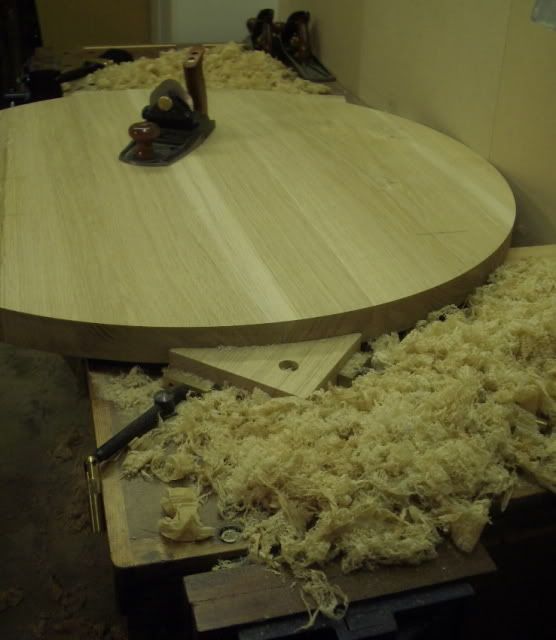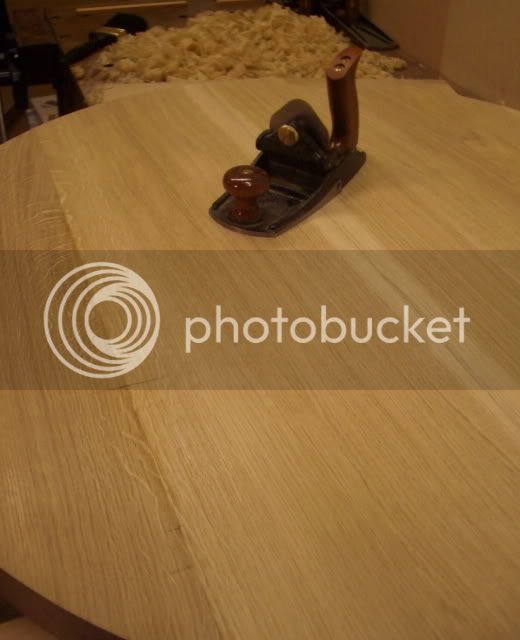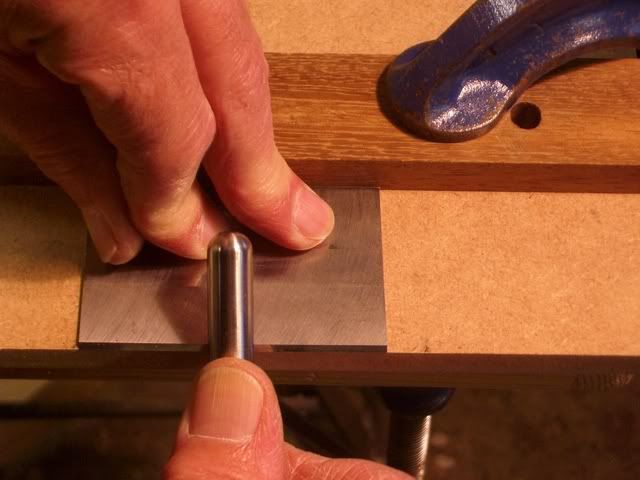Paul Chapman
Established Member
In discussions about planes and tearout it is often said that scraper planes do not give as good a finish as you can get from a normal bench plane used with a higher effective pitch. That has not been my experience, so I'm interested as to why some people think that the finish from a scraper plane is not so good.
I use both the Veritas scraper plane and the Veritas #80-style scraper. They are both used with the blades honed at 45 degrees and a hook formed on the bevel. As you can see from these pictures of an oak table top which was cleaned up entirely with the scraper plane, it produces proper shavings just like you would get from a conventional plane


The finish was silky smooth and every bit as good as I would have achieved with a normal bench plane - the only difference being that I didn't have to worry at all about tearout.
Cheers :wink:
Paul
I use both the Veritas scraper plane and the Veritas #80-style scraper. They are both used with the blades honed at 45 degrees and a hook formed on the bevel. As you can see from these pictures of an oak table top which was cleaned up entirely with the scraper plane, it produces proper shavings just like you would get from a conventional plane


The finish was silky smooth and every bit as good as I would have achieved with a normal bench plane - the only difference being that I didn't have to worry at all about tearout.
Cheers :wink:
Paul





